Disclaimer: This post contains affiliate links to handpicked partners, including tours, gear and booking sites. If you click through or buy something via one of them, I may receive a small commission. This is at no extra cost to you and allows this site to keep running.
Traveling in Japan has a high price tag, but it doesn’t have to be hefty on the pocket if you plan well. This guide on Japan trip costs has budget tips and breakdowns for transport, bookings, and accommodations across the country.
Knowing that Japan has a higher cost of travel can be offputting, but the expense is secondary to the experience. Whether you want to soak up the bright lights and the distinct character of the big cities like mega-metropolis Tokyo and edgy-alternative Osaka, wander the old, narrow wooden house-lined alleyways of Kyoto, stroll through the scenic smaller towns of Kobe and Nara, or relax within the beach towns and mountain ranges of the peninsulas and islands, Japan is vast, with endless changing scenery.
Aside from where to go and what to do, the questions of ‘Is Japan expensive?’ and ‘How much does a trip to Japan cost?’ are always at the fore. So I will cut to the chase— travelling here is more costly than in its Asian neighbours. Yet, by pre-booking rail passes and pre-planning your rough route and associated bookings, you’ll save yourself some money.
This Japan travel cost breakdown will help you plan your trip, calculate your estimated Japan budget and see exactly where your money goes.
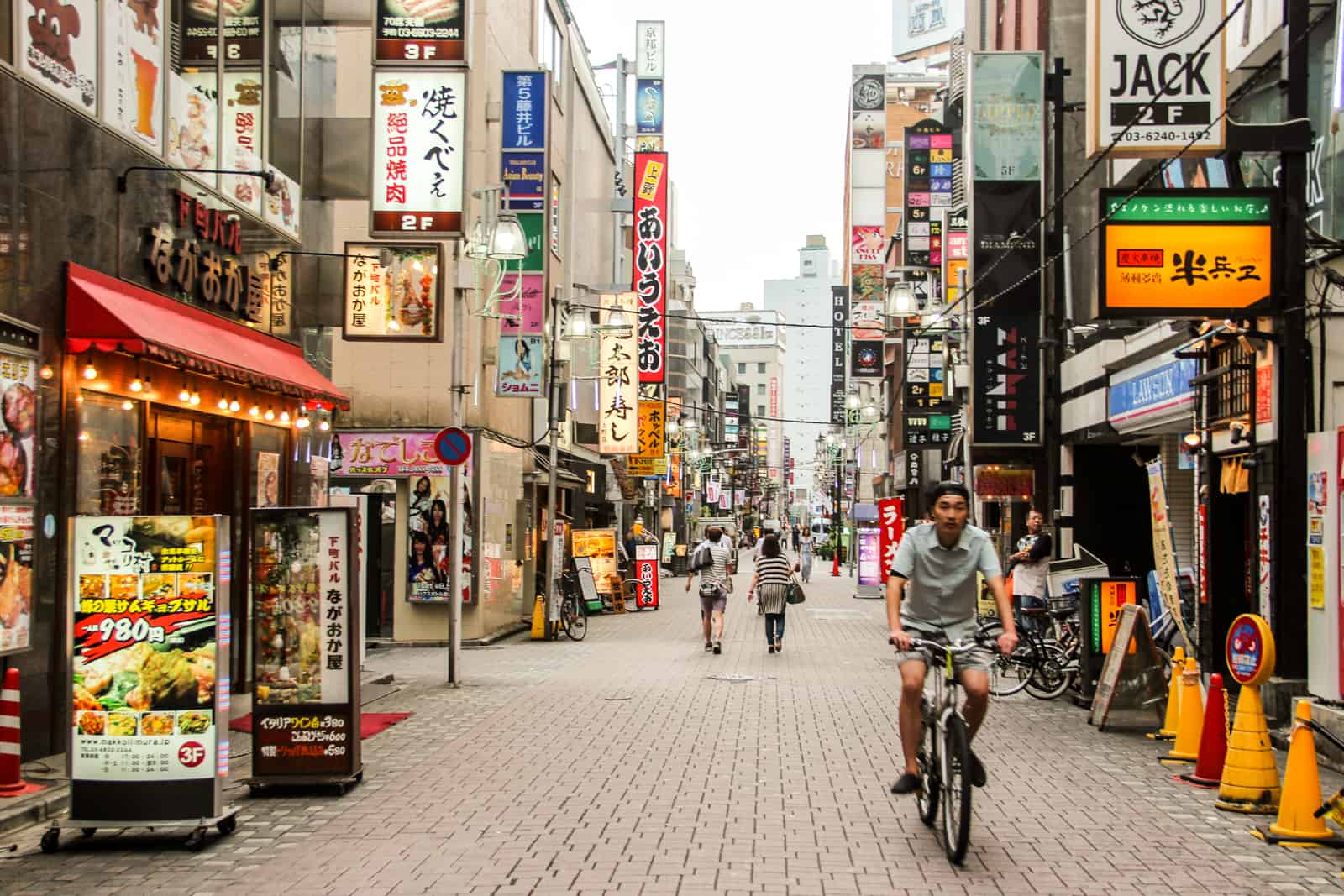
How Much Does It Cost To Travel In Japan? Save with these budget trip tips.
Contents
- Plan How Many Days to Spend in Japan
- When is the Cheapest Time to Travel to Japan?
- A Japan Trip Cost in Comparison to the Rest of Asia
- Trip Cost by Length of Visit
- Is it Worth Getting a Japan Rail Pass?
- Other Transportation Costs in Japan
- Cost of Food in Japan
- Accommodation Costs in Japan
- Cost of Tours in Japan
- How Much Do Attractions Cost in Japan?
- Is Japan Expensive?
Plan How Many Days to Spend in Japan
Of course, the length of your Japan itinerary determines your budget. Typically, visitors spend two weeks in Japan on their first visit, hopping between the major cities and associated landmarks and sites.
I spent four weeks in Japan on my first visit and three weeks on my second, travelling entirely via overland transportation. I wanted to see a range of different places and spend a quality amount of time in areas that are both key highlights and some of the biggest areas to explore – Tokyo (one week), Kyoto (five days) and Osaka (at least three days), time to climb Mount Fuji and to cross the country and get down to Hiroshima, and over to Kanazawa for a taster of the Japanese Alps.
Not even one month is enough – Japan is much bigger than you think, and seeing it all on a single visit is impossible. I still have not visited the far northern regions of Japan, dug deeper into the towns and cities of the Alps, or gone anywhere further south than Hiroshima or the outlying islands, which would mean having to budget for an internal flight. So the key is to pick your main town and city bases and get booking.
If you are planning a trip to Japan and don’t know where to start on what destination to visit, check out my other Japan travel tips and city overviews for inspiration.
- What is Tokyo Like? Things to Love About Japan’s Capital City
- Climbing Mt Fuji – Summiting Japan’s Sacred Peak
- What to Do in Osaka – The Rebellious, Eccentric, and Brash City
- Things to Do in Hiroshima – A City With Unforgettable History
READ ALL: On my Destination Page for Japan.
When is the Cheapest Time to Travel to Japan?
The most expensive times to visit Japan: The designated high seasons of March to May (spring season) and September to November (autumn) see the most visitors.
The most cost-effective time to visit: It’s a good idea to look for flights to Japan and accommodation deals during the off-season between November and March. However, since Japan was one of the last countries to open following intense pandemic measures, exponential visitor numbers continue, so it remains busy throughout the year.
The summer months: From June to September (especially July and August), travel in Japan can be unbearably hot and uncomfortable for travel and sightseeing, putting some people off. But it is doable – my first visit was during the height of summer, and I still enjoyed it.
Mount Fuji’s official climbing season: The trails on Japan’s sacred peak are only open between July and September, a big factor for the thousands taking the pilgrimage.
A Japan Trip Cost in Comparison to the Rest of Asia
Japan is one of the most expensive countries to travel to in the Asia region.
On my most recent trip in November 2024, I spent around €2000 in three weeks.
Backpackers and hardcore travellers used to be a minority here, instead opting for the budget Southeast Asia trails. Now, Japan attracts a mix of backpackers to business travellers, with accommodations to cater to all. Japan’s tourism industry has one of the fastest growth rates annually.
In reality, Japan isn’t going to get any cheaper; in fact, it’s getting even more expensive – Japan Rail Pass costs have increased, and despite a weak Yen, accommodation prices per night are still hefty. The one place you can save money on is food, local Ramen outlets especially.
But avoiding Japan for cost reasons alone means missing out on what is rated as an absolute must-see destination.
In the Southeast Asian countries of Cambodia, Laos, Vietnam, Indonesia, and Thailand, you can expect to spend an average of €700-£1000 / $740-$1050 + a month on a budget. China, Taiwan, and Nepal cost approximately the same. Singapore, Malaysia, and South Korea are slightly higher, depending on transport options or where activities and attractions are harder to reach or organise independently.
Japan is, therefore, almost double the cost of a typical trip in Southeast Asia or its neighbouring countries.
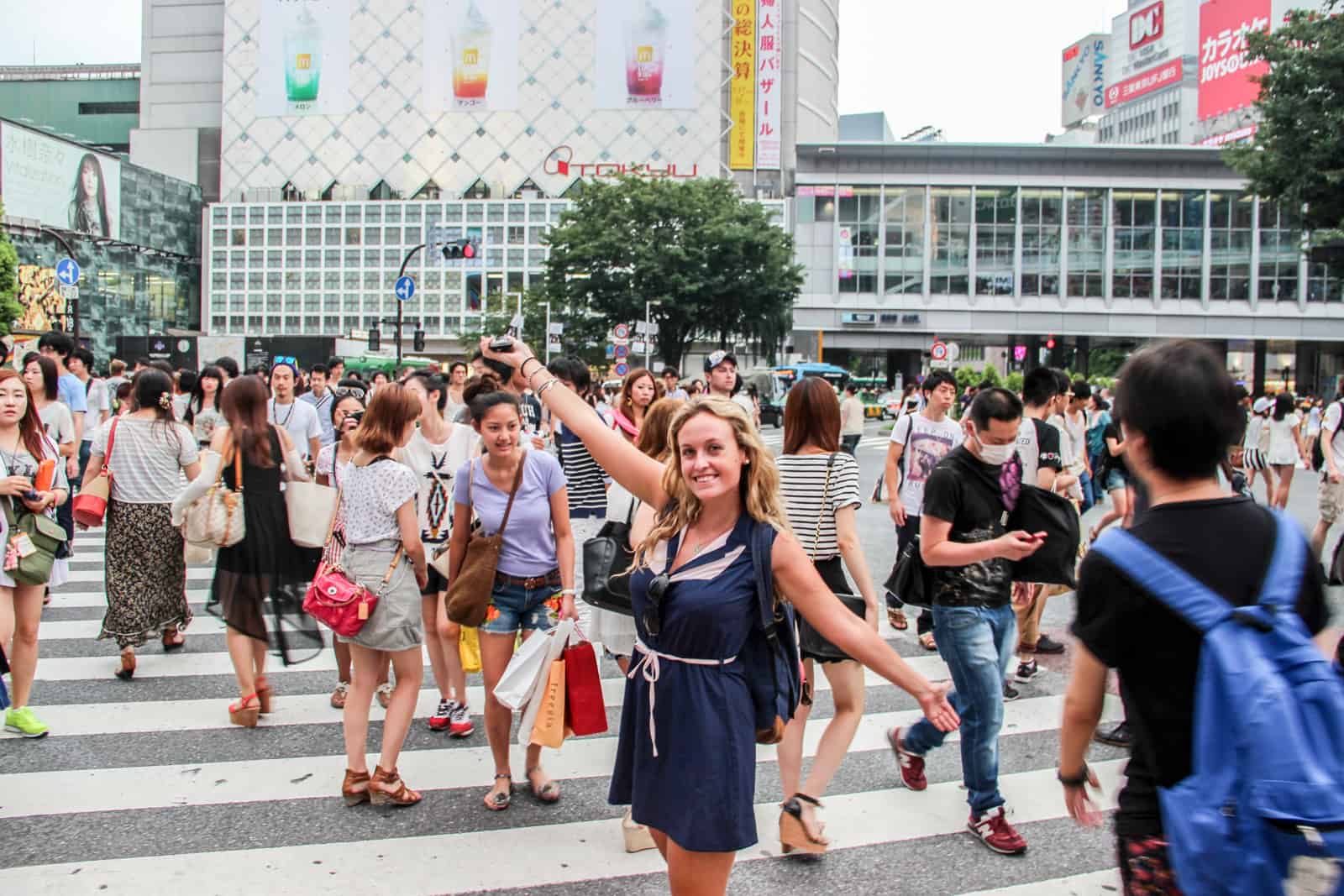
Japan is expensive when it comes to travelling in Asia. But it’s worth the cost.
Trip Cost by Length of Visit
In Japan, independent travel is easy. Hostel options are plentiful, local food outlets and street food snacks are cheaper than larger restaurants, the local transport network, including metros, is cost-effective, and long-distance rail travel can be cheaper if you buy regional rail passes.
Estimated calculations are from a 2024/2025 trip based on transport, accommodation, and food expenses. All variations include the cost of a 7-day and 21-day Japan Rail Pass (following its recently hiked prices).
- Japan trip cost for one month
-
- £2,250 / $2,800
- Japan trip cost for one week
- £550 / $700
- Japan trip cost per day
- £80-£100 / $100-$125
Cost of a Two-Week Japan Vacation
Based on the average vacation time of two weeks, you need to budget at least £1100/$1,400.
Around one-third of that will be spent on a 14-day Japan Rail Pass (80,000 YEN), though I saved money on my second visit by purchasing a 7-day JR West All Area Pass (26,000 YEN), allowing unlimited travel between Hiroshima and Kyoto and around, and booking a couple of extra trains on top, such as Kyoto to Tokyo.
How Much Money Do You Need Per Day in Japan?
, with some even visiting as a layover in Tokyo, it can be easier to calculate a daily budget in Japan.
Japan on a budget – 15,000 Yen per day (£80 / $100)
Those looking to stay in hostels, eat cheaper meals, and not frequently indulge in nightlife.
Japan on a mid-budget – 20,000 Yen per day (£100 / $130)
For those wanting to stay in low-cost hotels, enjoy the restaurant scene and nights on the town, and the odd activity/experience splurge.
Japan on a high-end budget – 25,000 – 40,000 Yen per day (£130-£200 / $165-$250)
For those wanting more luxury, the best cuisine in town and first-class train tickets.
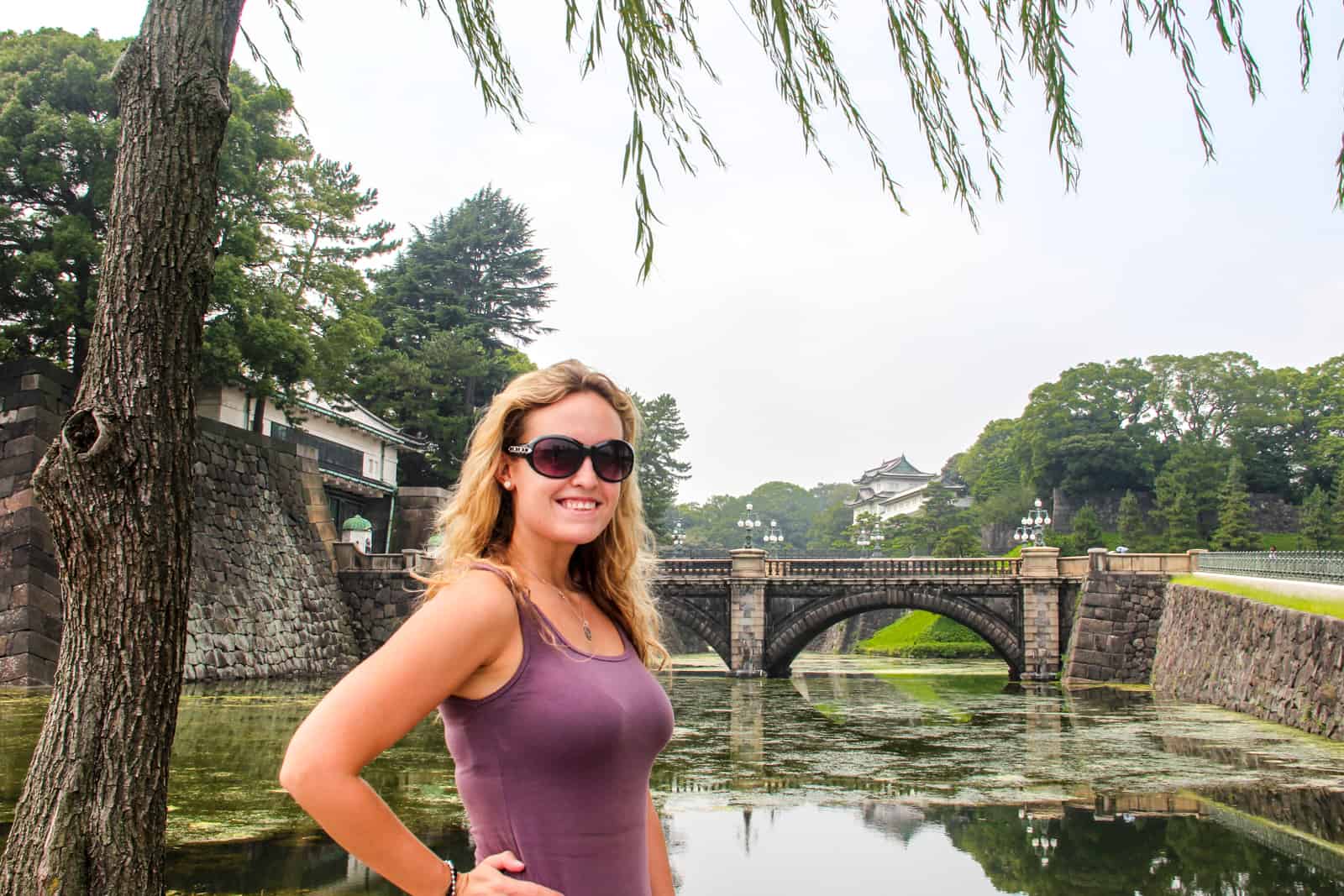
You’ll need to budget around $1,200 for a two-week backpacking trip around Japan.
Cost of Travelling in Japan for One Month
Japan Rail pass
- 21-day pass, ordinary car – 100,000 YEN = £420 / $530
Accommodation for 30 nights
- 2 adults: budget private room, on average £80/$100 per night = £2400 / $3040
- Single: private bed or dorm, on average £40/$50 = £1200 / $1520
Food, drink, tourism site entry fees, other transport, and day-to-day living
- Based on an average of £30/$38 per day = £900 / $1140
Is it Worth Getting a Japan Rail Pass?
The Japan Rail Pass might be one of the biggest initial costs. Suppose you plan to visit more than three or four long-distance destinations in Japan. Buying one is highly advised in that case. It gives you unlimited journeys on all Japan Rail, Japan Ferry, and Japan Buses throughout the country.
Many people are put off by the high cost of the rail pass, but individual rail journeys are expensive and, when added together, can cost more than the unlimited rail pass. Since the Japan Rail Pass price hikes in October 2023, it is worth working out planned train journeys and seeing if you can save by having the pass.
Standard Train Prices in Japan
Are you thinking of paying as you go? Here are some average one-way train ticket costs in Japan without using a Japan Rail Pass.
- Tokyo – Kyoto: £94 / $118
- Tokyo – Osaka: £97 / $122
- Tokyo – Hiroshima: £128 / $161
- Kyoto – Osaka: £20 / $25
- Kyoto – Hiroshima: £77 / $97
- Osaka – Hiroshima: £70 / $88
The average cost for a Tokyo – Kyoto – Osaka – Hiroshima – Tokyo round-trip (without using a Japan Rail Pass) = £348 / $440.
For one week of travel, individual train tickets may be the more cost-effective option. That’s if you can find good fares at the time of travelling.
How Much is a Japan Rail Pass?
If you cover this basic route of city highlights, buying a Japan Rail Pass for two or three weeks of unlimited travel in Japan can save you a lot of money and avoid the hassle of searching for the lowest-cost ticket.
You should invest in a Japan Rail Pass only to make the cost of multiple and long-distance travel worthwhile.
The following are prices for the standard/ordinary class tickets.
7-day Japan Rail Pass
£261 / $330
14-day Japan Rail Pass
£418 / $528
21-day Japan Rail Pass
£523 / $661
Buying a Japan Rail Pass
The Japan Rail Pass must be booked before you arrive in Japan.
Local travel agents can book this for you, and you will be given a receipt to be presented at the main stations in Tokyo in exchange for your pass. However, it’s quick and easy to purchase a Japan Rail Pass online, as shown below.
Japan Rail Pass
From £261/$330/50,000 Yen/Multiple Currencies
You can purchase a rail pass from Japan travel experts, J Rail Pass. Multiple-day and regional passes can be ordered with free delivery in various countries. The website is easy to use, with quick and secure payment and with other Japan travel services to hand.
Buy a Japan Rail Pass Now
Buying a Japan Rail West Pass
On my second trip to Japan, it made more sense to purchase a 7-day JR West pass that covers a huge swathe of Kansai. I flew into Osaka and stayed for three days, activating my 7-day pass on the date I planned to leave the city. I then used the pass to travel down to Hiroshima via Shinkansen bullet train, up to Kyoto, and have free reign to travel to surrounding areas like Kobe and Nara. The pass covers the southern Kyushu prefecture and reaches the Hokuriku area, home to Kanazawa and Toyama mountain towns.
It then made sense to purchase a standalone Shinkansen train ticket from Kyoto up to Tokyo, where I typically spend at least five days and don’t require a travel pass.
7-day JR West pass
£138/$175 /26,000 Yen/Multiple Currencies
Other Transportation Costs in Japan
Local trains in Japan
Local trains outside the JR Rail pass inclusion can cost anywhere from £3-£10 / $4-$13 for a short half-hour journey up to £15 / $20 for a destination an hour or more away.
Ticket prices vary according to which of the five different types of train you take:
- Local trains stop at every station on the route.
- Rapid trains skip some stations
- Express trains skip even more stations
- Limited Express stop only at major designated stations
- Super Express (shinkansen ‘bullet trains’) operate separately on different lines and with their own stations
Be aware of extra costs when using Japanese trains and booking tickets. An extra fee is applied on top of the train ticket base fee for the faster trains.This applies to the Express trains upwards (in terms of speed)
What seat class do you choose? While most local trains have a standard class across all carriages, there are two classes of seats on long-distance trains, which also affects your overall costs – Ordinary (Second Class) and Green (First Class)
- Green/first-class seats can sometimes be double the price of the standard fare.
- Shinkansen (bullet) trains have reserved and non-reserved seating options, where a reservation can cost within the region of $5.
- Shinkansen (bullet) train seat reservations are free with the Japan Rail Pass.
Check here for routes and timetables for trains in Japan.
Japan Metro and Bus System
Japan has metro lines in nine cities, although you are likely to mainly use those in Tokyo, Osaka, and Kyoto. Tokyo’s subway is the largest and most tricky to navigate, although I always find myself being helped out by locals who came to my aid in helping me purchase the right ticket or even ride the line with me until my correct stop.
A single trip on a Metro and average bus journeys in all cities varies but is usually from 180 – 400 Yen – around £1 -£4 / $1.25 – $5 for a single journey.
You can purchase an unlimited Tokyo Metro Pass: 24 hours (800 Yen/€4/$5), 48 hours (1,200 Yen/£6/$8), or 72-hours (1,500/£8/$10).
A comprehensive breakdown of all metro lines, ticket prices, and tips on navigating each system can be found here.
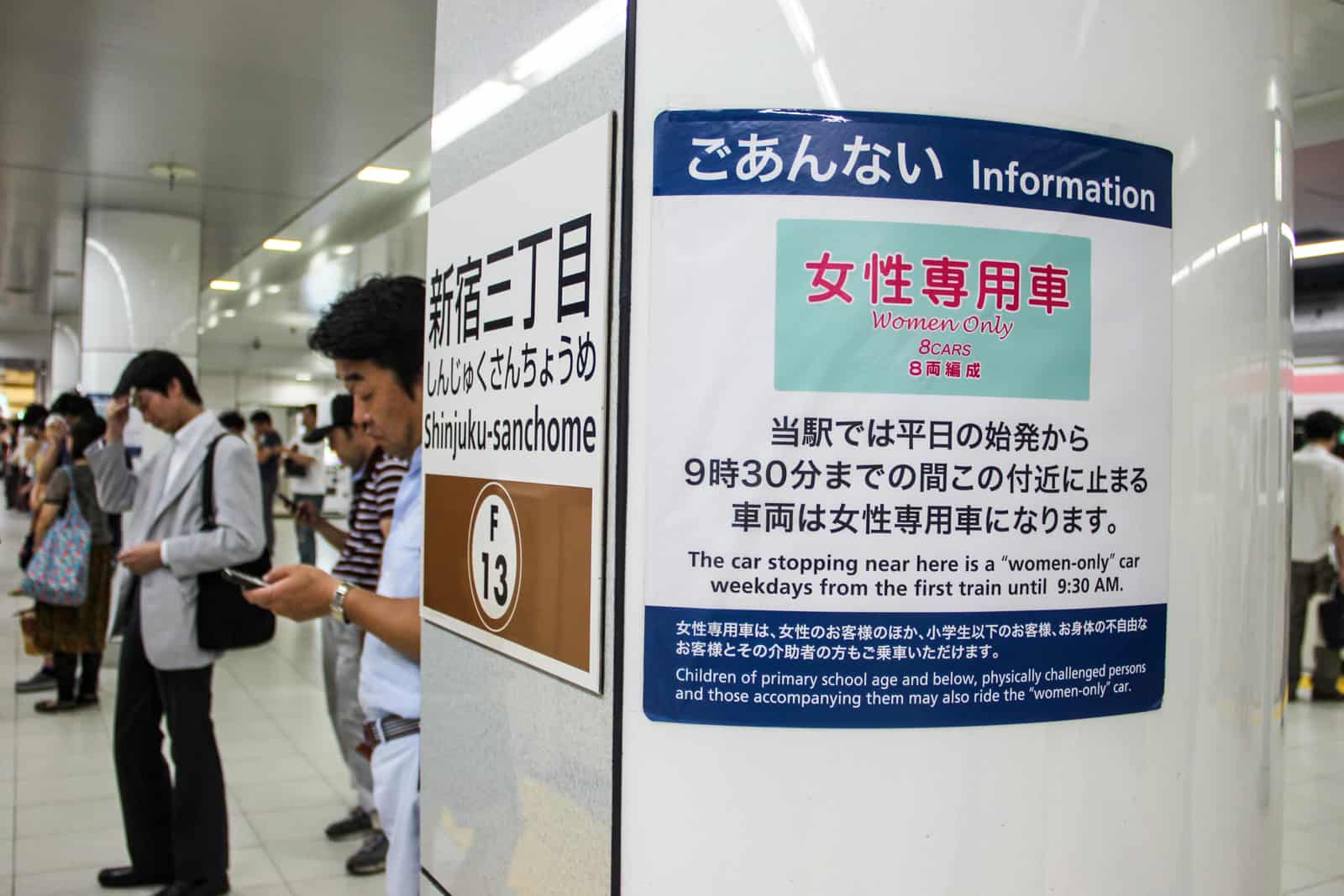
The Japan Metro is an overwhelming but cheap means of transport around the major cities.
Taxis in Japan
Taxis, especially in Tokyo, are ridiculously expensive and should be avoided unless absolutely necessary or if you have no choice. As an example, a 20-minute journey home after a night out in Tokyo cost nearly £38 / $48, and that was even on the meter. Taking an Uber was a similar cost.
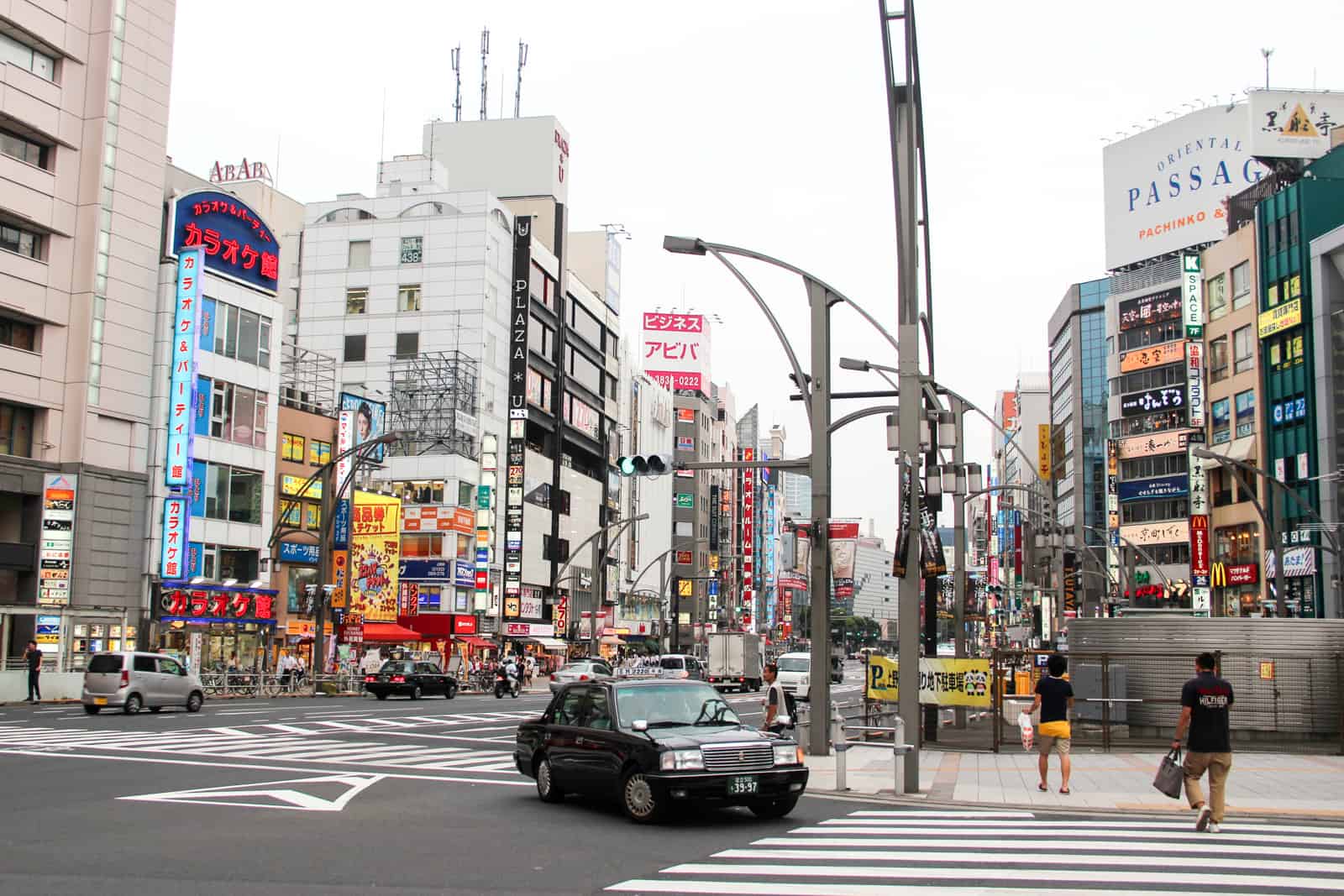
Japan black and yellow taxis are an expensive option.
Bike Hire in Japan
Like most destinations, bike hire is common and one of the most budget-friendly ways to get around and explore an area.
Many guesthouses in Japan offer this facility for free, and if not included, the average cost I found for a one-day bike hire was £5/$6.
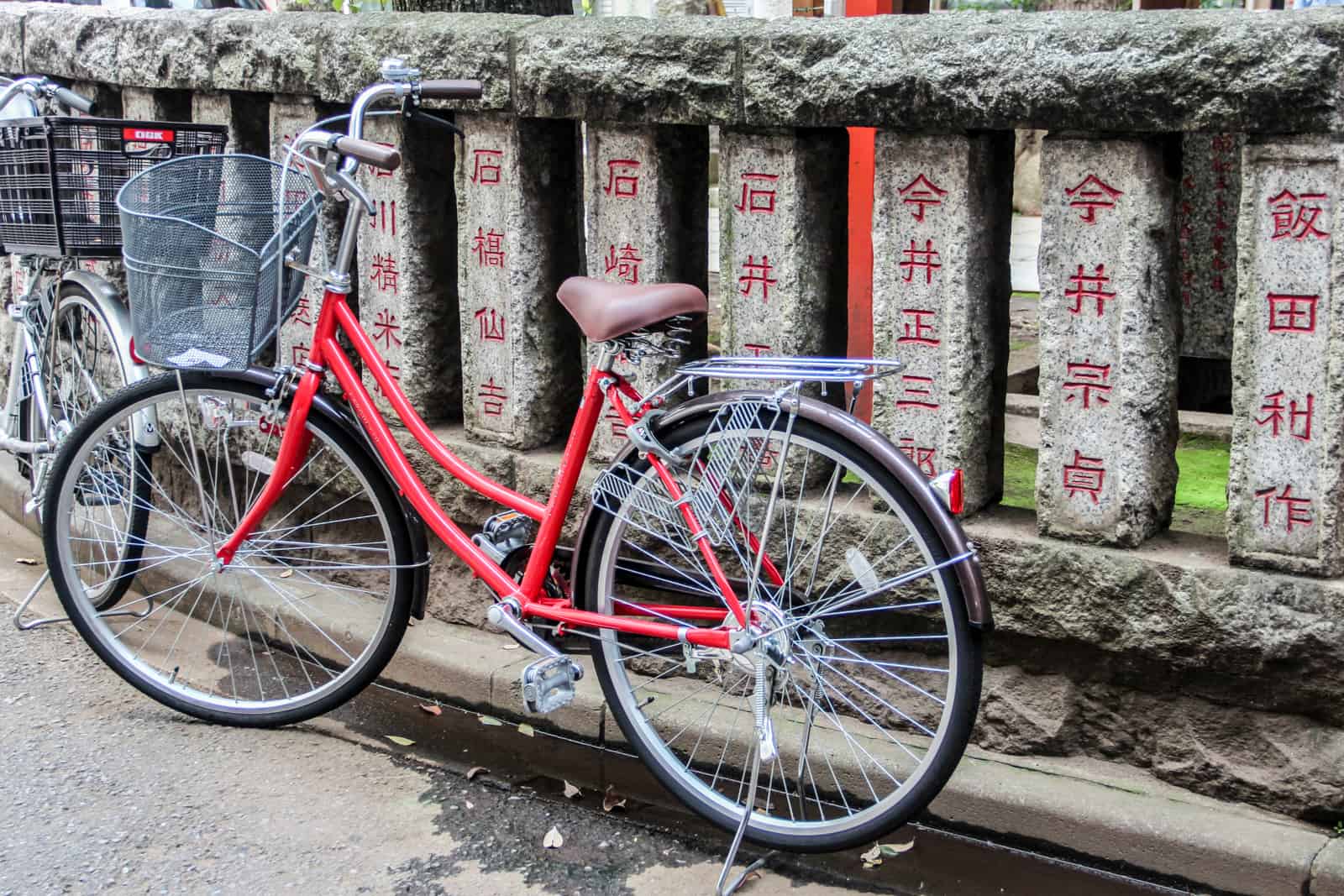
Make use of free or inexpensive bike hire from Japanese accommodations.
Cost of Food in Japan
Food prices (and drinks) vary dramatically depending on location. You may be eating a cheap bowl of ramen noodles for a full meal at a standard restaurant or trying the delectable beef that Kobe is famous for, with a hefty price tag! Chain restaurants like the CoCo Ichibanya curry house do great deals alongside local establishments, which might throw in a free beer if you stick to a certain menu. Sushi doesn’t have to be an expensive option, as does tempura.
One budget food tip for Japan is to get breakfast, snacks, and sushi sets at a local supermarket. You can even stay within a 1,000 Yen budget (£6 / $8) for a meal.
- A meal in a local restaurant: £5-£10 / $6-$13.
- Ramen or curry: £6 / $8 (can be sought for less than 1,000 Yen).
- Kobe beef (special, must-do treat!): £17 / $22+.
- Budget sushi: £0.75 / $1 (Around 100 Yen per item on the menu)
- Sushi at Tokyo’s Tsukiji Market: £13-£20 / $17-$26 (2,000 – 3,000 Yen for sushi sets of around seven pieces or more).
- Cover charge at themed bar or restaurant: £6 / $8 on average.
- Bottle of beer: £3 / $4.
- Cup of coffee: £3 / $4.
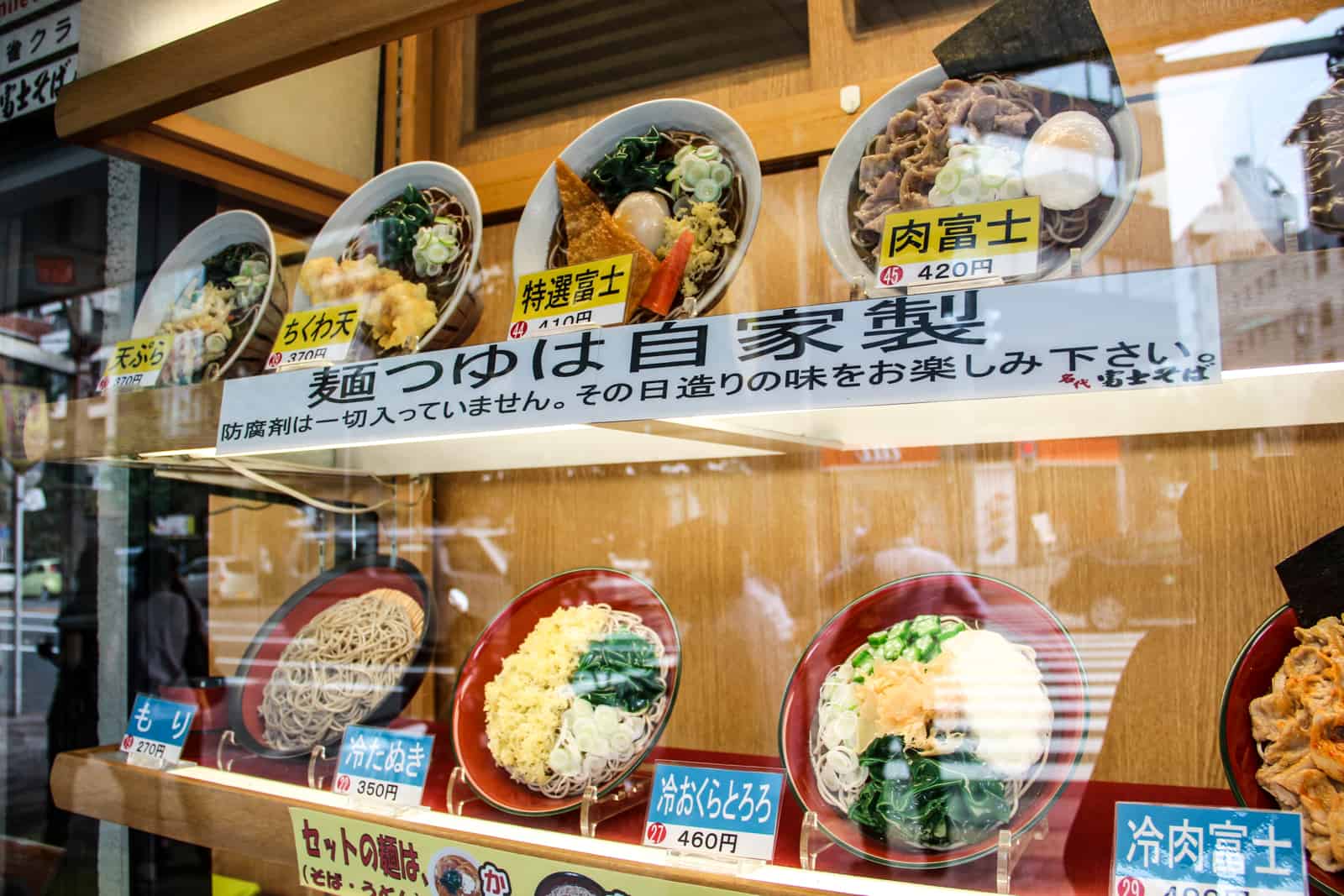
Plastic food on display at Japanese restaurants makes choosing and knowing the price easy.
Accommodation Costs in Japan
In Japan, accommodation will be your biggest cost, alongside transportation.
Hostels are prevalent in big cities like Tokyo, Kyoto, and Osaka, as well as smaller cities like Kobe and Kanazawa. In many areas, old houses and factories have been turned into homely hostels and guesthouses, and traditional Ryokan are being preserved, meaning you can experience Japanese tradition and local living at a relatively good price outside of large hotels.
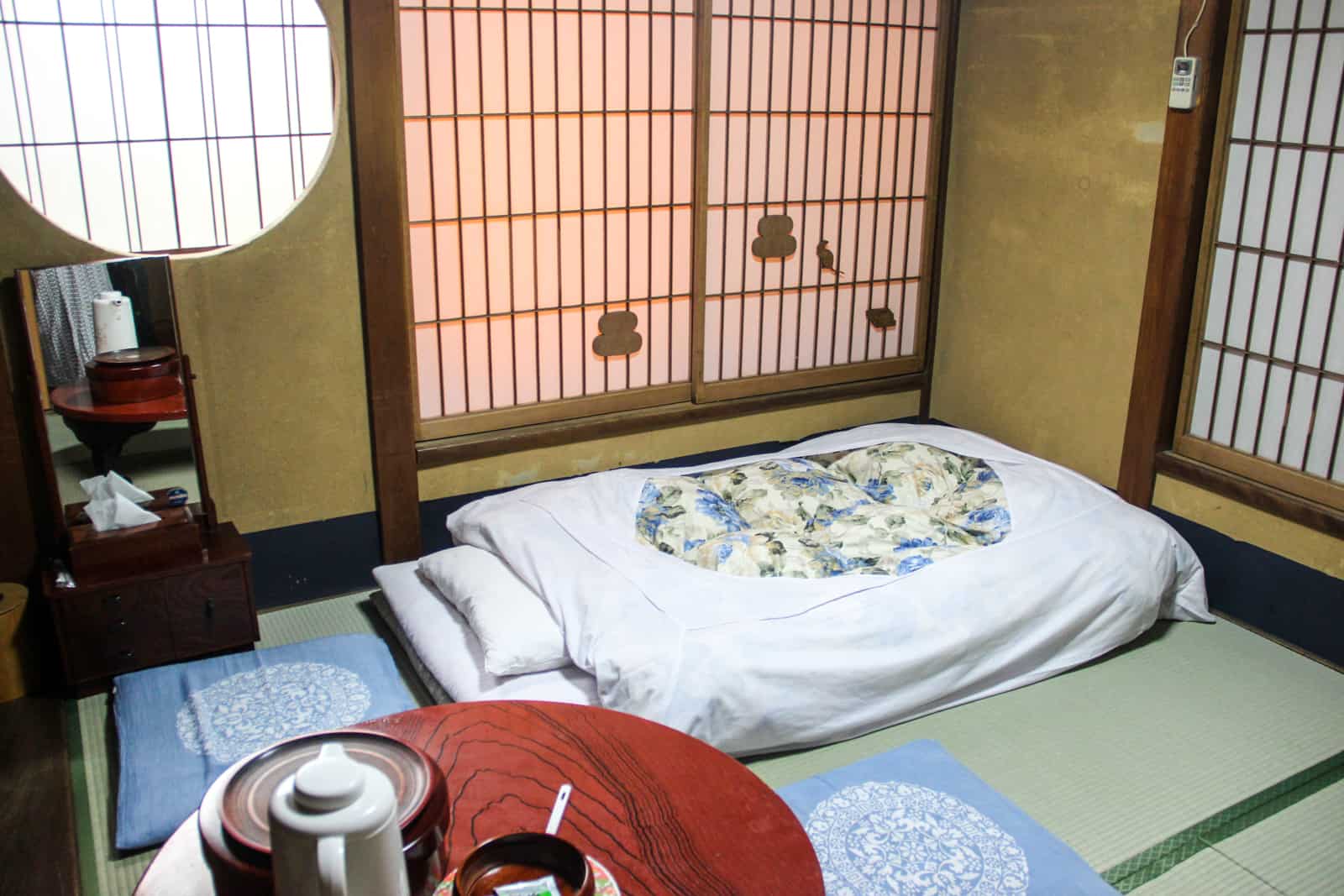
Factor in a traditional Ryokan (Japanese Inn) into your accommodation budget.
I stayed at the range of accommodations in Japan listed below to pull together a comprehensive list of options that cover all manner of budgets, from no-frills to luxury hostels, to traditional homestays and Ryokans, on a journey that started in Tokyo and which took me through various key hotspots in the country, all the way down to Hiroshima.
Below is an outline of where I stayed and the costs per night for a dorm or a single room.
Tokyo Accommodation Costs
Homeikan – A traditional Ryokan, said to be Tokyo’s oldest, with an onsen bath.
From £41 / $51 for a private room
Mount Fuji Area Accommodation Costs
K’s House Traveller’s Hostel in Kawaguchiko – In the heart of the Fuji area, with free bus transfers to the main train station.
From £58 / $73 for a dorm room
Private rooms from £140 /$176
Standard mountain house on Mount Fuji
From £38 / $48 for a sleeping space, sleeping bag provided
Ito Accommodation Costs
K’s House Ito Onsen – Shared and private rooms within a 100-year-old Ryokan, with an onsen bath.
From £20 / $25 for dorm room
From £58 / $73 for a private room
Kyoto Accommodation Costs
Santiago Guesthouse – A new hostel with its very own luxury café.
From £11 / $13 for a dorm room
Kyoto Piece Hostel – A luxury hostel with a swanky hotel vibe.
From £42 / $53 for a private
From £15 / $19 for a dorm room
Haruya Hostel – An old Japanese house converted into a homely guesthouse.
From £16 / $20 for a dorm room
Utano Youth Hostel – A traditional ‘youth hostel’ outside of the central city.
From £21 / $27 for a dorm room
Nara Accommodations Costs
Nara Backpackers – A traditional Japanese house turned into a cosy guesthouse.
From £16 / $20 for a dorm room
Osaka Accommodation Costs
J-Hoppers Osaka – Based slightly out-of-town in nearby Konohana ward (where Universal Studios is based) and main transport links.
From £17 / $22 for a dorm room
Kobe Accommodation Costs
Yume Nomad – A huge local house turned guesthouse with its own in-house café.
From £17 / $22 for a dorm room
Hiroshima Accommodation Costs
From £13 / $17 for a capsule
Nest Hotel Hiroshima Hatchobori
From £49 / $62 for a economy double
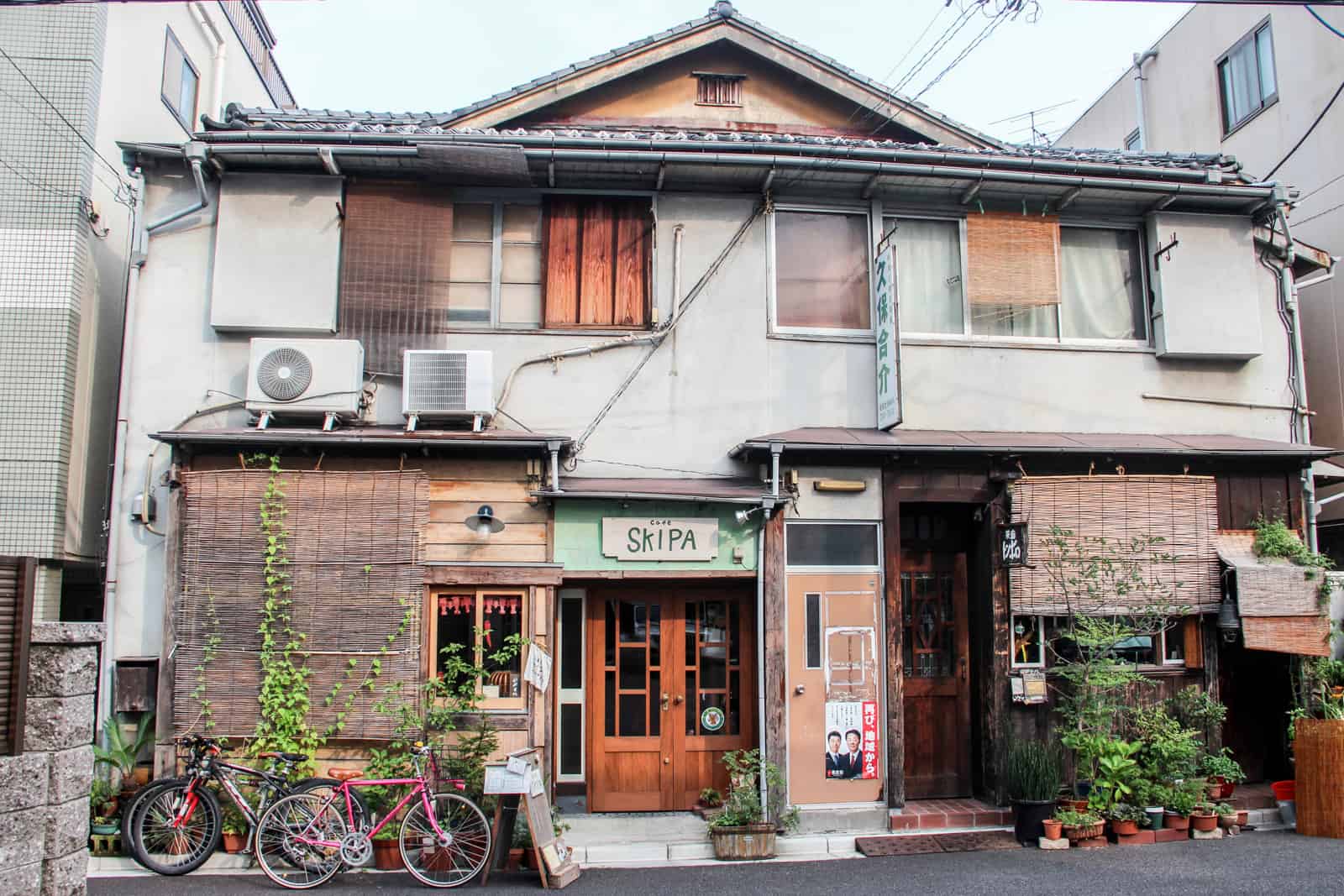
Living locally in Japan. Many traditional houses have been converted into small hostels and guesthouses.
Book a Hotel in Japan
Cost of Tours in Japan
For some, independent travel in Japan might seem overwhelming. If you embark on solo travel in Asia for the first time, Japan can feel more isolated and less trodden than the Southeast Asia hotspots. Would you rather a travel trip to Japan be taken care of and travel in a small group with other adventurers? I recommend these tours of Japan with G Adventures, which takes in many of the country’s key cities and highlights, getting you from Tokyo to Hiroshima and back again.
With a variety of trip options from five days to two weeks, including visiting the iconic Japanese sights on a National Geographic Journey trip, seeing Japan’s highlights on a budget, or travelling the backroads of Japan, you could even mix and match a small group tour with independent travel.
How Much Do Attractions Cost in Japan?
Eccentric shows, walking tours, cultural tours, and ceremonies also factor into your exploration budget when travelling in Japan.
Temples, castles, and palaces are mostly free to enter, although some historical monuments may have an admission fee, which contributes to the site’s protection.
For example, Tokyo is a dream on a sightseeing budget, with core sites such as the Buddist Sensoji Temple and the Imperial Palace grounds having no admission fee. However, the Kinkaku-Ji Temple of the Golden Pavilion in Kyoto is ¥400 – $2/€3.
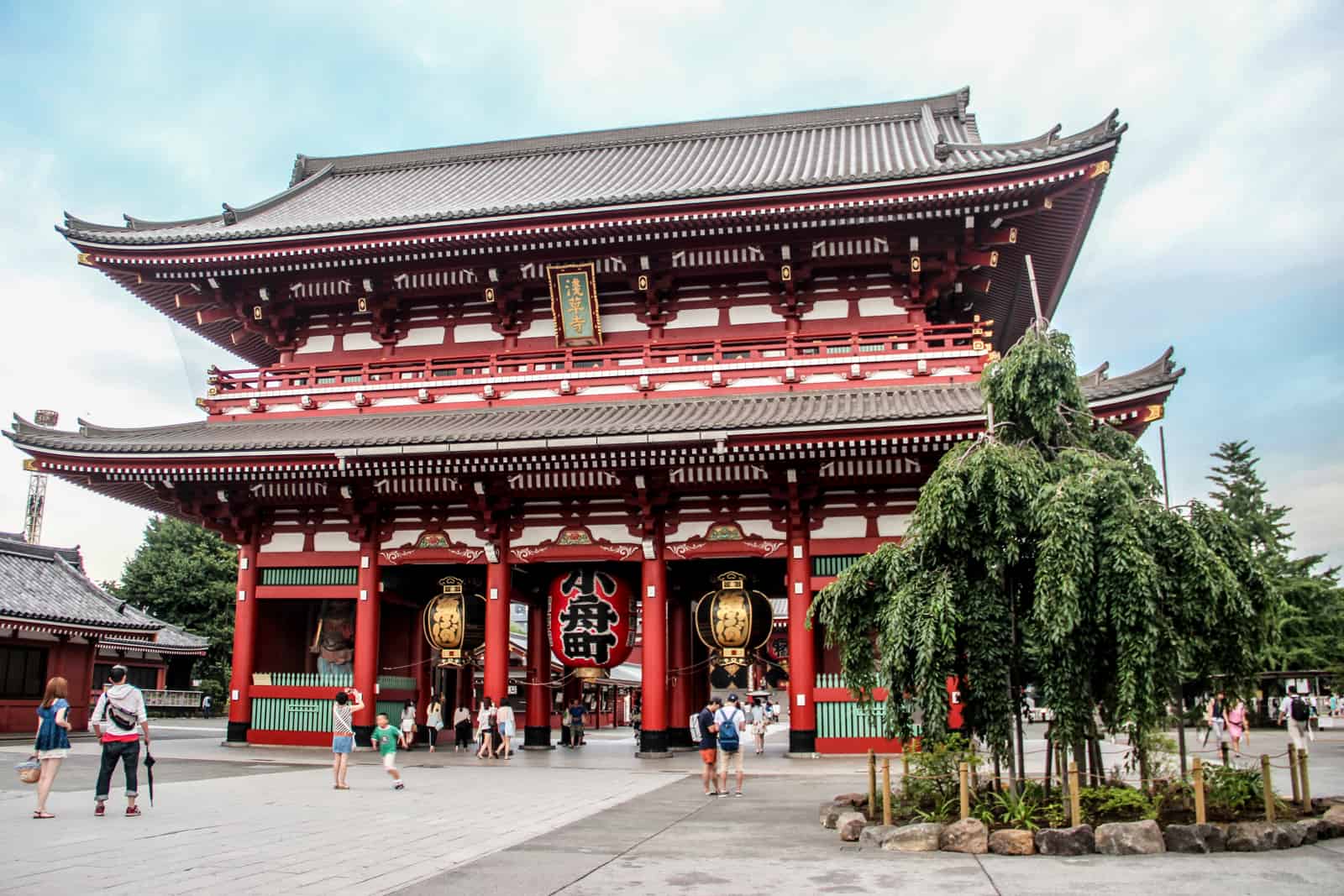
Sensoji Temple in Tokyo is free to enter. Sightseeing in Japan isn’t expensive.
Is Japan Expensive?
Yes, but the cost of travelling within Japan is relative. Before getting there, you must decide where you will go, whether to purchase a rail pass, and what kind of accommodation you want to stay in, whether its budget hostels, boutique hotels or traditional Japanese experiences.
Everything else along the way falls into place, and if you look hard enough when it comes to food and other everyday costs, your overall Japan vacation cost might not be as overwhelming as you expect.
Japan may be more expensive than her Asian neighbours, but the incredible time you will have here will leave you saying the same thing long after you have left: “It was completely worth it”. I promise you that.
Planning a Trip to Japan and Want to Budget? Pin It!
Any plagiarism of this Japan cost travel blog, or any of its calculations and descriptions used on other sites and blogs without attribution is not information authorised by myself for use.

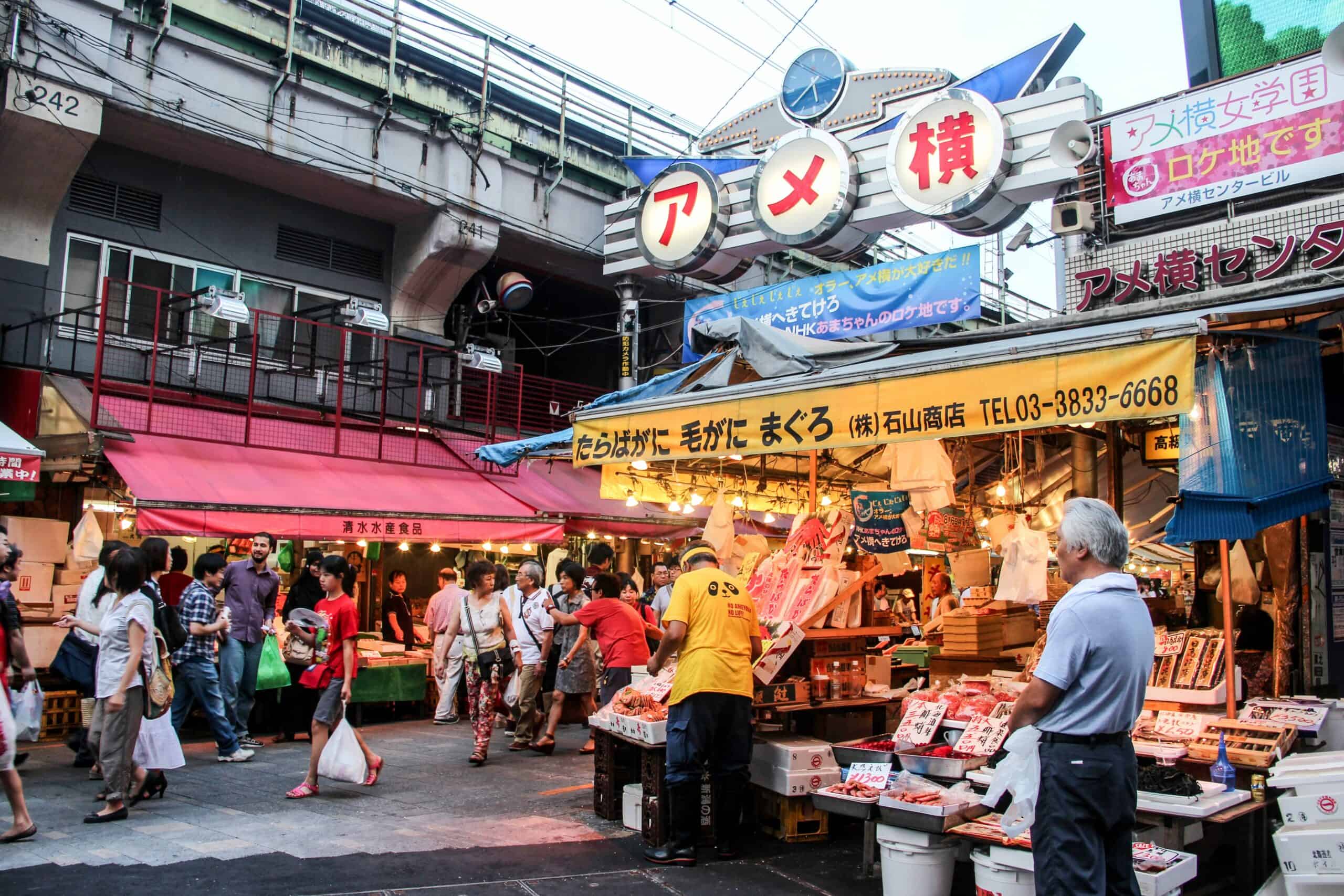
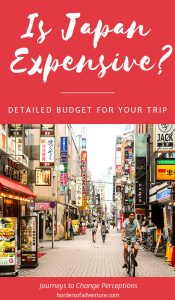

Rune says
So quick question I guess for me would be, the rail pass does not cover local buses or trains in Tokyo? Or like smaller distances? I just want to make sure it’s worth getting since I am only making a trip from Kyoto to Tokyo and if it won’t cover other trains I don’t think it would be worth getting it. What do you think?
Becki says
If you are only planning to take one train (the bullet train for that journey being no more than $20) then I don’t think buying a JR Rail Pass is worth it. It’s more intended for those taking multiple train journeys around the country.
Thanh Pham says
Hi Becki,
Could you please help me a bit? I am visiting Japan this October, from 14th–21st. I am quite confused how much I should spend beside the cost for transport & hostel.
I am visiting Hiroshima from 14–17th and Kansai area (from 17th–21st, bases in Osaka and from here go to Kyoto, Kobe..). Its 42.100 yen for transport & hostel already, how much do you think i should prepare more for the trip?
Thank you a lot for your help
Thanh
Becki says
Hi Thanh. I’ve done my best here to break down costs for everything in Japan. I can’t tell you how much you should bring. Some people like to splurge more on food, others like to go shopping, or day trips to neighbouring cities. It’s a case of working out roughly what you want to do, and having more to cover yourself or a bank card that can work in Japan.
Rita Saavedra says
Thank you for your helpful tips. I am planning a trip to Japan in May 2017 for a total of 10 days. Two days for flying and 8 on ground. However, I am being charged $3458 (does not include air fare). This price seems steep for me. Your tips have encouraged me to research and plan the trip on my own. I do want to ask who helped you plan your sight seeing adventures?
Becki says
I planned it all myself. I got a one month rail pass and wrote a list of all the cities I wanted to visit. I also got help from a local who gave me tips on how long to stay in each place and an ideal route. The Japanese are very helpful when it comes to all that stuff 🙂
Jb says
I recently just got back, I stayed at friends homes so it was a little bit cheaper, however, I was pretty free using on my money and I only ended up using 1,500 dollars for 10 day airfare round trip, two week rail pass, 5 nights in hotels, and of course lots of sushi! I think I would try to find cheaper flights. I also recommend avoiding traveling from June to August. And mid November till February. The cheapest times are September and may. Also, stay 30 min outside of the big cities and there are much cheaper accpmodations.
Franklin Orosco says
I lived in and around Tokyo for two years and recently returned for a holiday. As far as saving on food costs, I would strongly suggest going to one of the large department stores which feautre one or two floors of stalls which sell packaged foods that just need to be heated at home. The thing is is that just about 30 minutes before closing time, they are quite eager to sell off the dishes that they cannot sell the next day, so the price cuts are enormous I saw discounts of up to 70%, but the norm was more like 50% off for all kinds of great food. If you have a fridge to put it in, you can have it for lunch the next day. Also, during the lunch hour, I would go down to a convenience store like Lawson`s or Family Mart to get a bento for about 10,000 Y. Eating doesn`t have to cost a fortune, but it is definitely higher than Thailand.
Becki says
Thanks for the great food tips!
Cassie says
Hi there, just wondering, was the approx. cost of “£1,700” including return flights from the UK to Japan?
Thanks!
Becki says
No. I was living in Bangkok at the time 🙂
jaime says
As far as the Unlimited Subway/Metro day pass in Tokyo, It says for tourists with visas, I am not getting a visa because it’s a short stay, does that mean I am not eligible for it?
Becki says
Hi Jaime. By entering the country, even for a short time, you will have some kind of visa of present, even if it is not a full one.
YORU_J says
Great post! I lived in Japan for quite a long time. Coming back home to the states was a culture shock and I have struggled for a long time. I was in Japan 9 months ago and plan to go back again the same time this year. But this time traveling alone, (I was a paid tour guide last time lol) I wasn’t too sure of single traveling over there. This post listed some of the ryokans near where I lived that I had no clue about lol. However, since I did own an apartment the entire time I never searched for ryokans. I will probably stop in at these places for sure. Is it possible to just stop in un-announced and get a room? I know for larger rooms, and larger parties, it was nearly impossible to stop over night without an advanced reservation. But I will be stopping with many friends, but if they can’t host me I will have to crash at one of these places for a night.
Again thanks for the great post, if you have time if you would answer my question to the best of your knowledge that’d be fabulous.
Thanks
Becki says
In Japan, I 99% always tried to book ahead. Mainly because it is custom to do so and not turn up unannounced, and also to ensure a bed in a decent property in the town or city.
kate says
Hi there! Thank you for all your tips 🙂 I’m planning a skiing trip for the month of January and am wanting to stay mostly in cheap accommodation like hostels. Is it necessary to bring a sleeping bag or do most Japanese backpacker accommodations provide an equivalent?
Thank you in advance!
Becki says
I have no idea, sorry. The accommodation website should lost if they provide sleeping bags or not.
Fiona says
Hi Becki,
Thanks for all the tips – very useful!! I am hoping to finish my travels in Japan in May for 3 weeks. I was just wondering how safe/easy/pleasant it is to travel around Japan solo?? I really want to go but I haven’t done much travelling before (+the language barrier) so do not know whether it would be a good plan…?
Thanks.
Becki says
A brilliant place to travel solo. Great hostels to meet other travellers, safe country and SUPER helpful locals. It certainly is a good plan, in a very amazing country!
Alan says
Hi Becky!
Thanks so much for the breakdown. Very well done. I have a dearest friend who I’ll be staying with in Tokyo. But first I land in Bangkok. I have 4 months to travel Asia and I plan to do Japan for a month in the middle. Tokyo as the base, and venture from there. So all these cities you wrote for accommodations, you traveled to within a months travel? You think if I choose 1 months time of travel that’s a solid time ? Rails pass makes things much easier I’m sure.
Becki says
Hi Alan. Indeed, I visited all cities listed in one month. The infrastructure is great so definitely book that rail pass!
Terri Thornton says
Hello…in my humble opinion, there really is not “best” season to visit Japan. It is a country of 4 seasons, so each season brings with it something new and different. Spring (March-April) will be peak cherry blossom season in which the country is aplomb in a riot of pink colors, Summer is technically “monsoon” season, so it will be hot, humid and wet in most parts, but not all of Japan, fall will bring drier weather beautiful colors as the trees change. Winter will bring chilly days and snow in parts of Japan but far less tourists. You would probably want to use caution if wanting to travel during one of Japan’s many holidays (check the internet for specific dates) as many of the hotels and attractions will be quite booked and quite busy and the trains will also be booked weeks, if not months in advance. However, if you want to really get a taste of the culture of Japan, going during festivals and holidays can be a wonderful time to travel. Enjoy your travels!
Rob says
Hi Becki!
Really useful information here. I am currently traveling Asia for nine months and hope to finish with a one month trip to Japan. I lived in Hiroshima for I was very young but my Japanese is limited to basic conversation. I was thinking of flying in to Tokyo and visiting nearby areas including mt. Fuji, and then heading north to places that I haven’t been before. In your opinion is the JR pass very flexible in terms of locations and trains that you can take or does it stick to main routes only and ecxclude many out of City or rural locations?
It has been nearly twelve years since I last visited Japan and so I am sure things have changed a lot. I wish I could go for more than one month but as you say the costs are high! Totally worth it ^_^ any info you can provide would be most appreciated. Can’t wait to get back there, I’m sure it wont be the last time!
Kind regards,
Rob Carey
Becki says
If you look at Japan Rail Pass link, you will find there are a variety of routes and ‘plans’ you can purchase. I still had to pay for some ‘local train’ connections but the pass covers the major long-haul routes and main connections.
Veronika says
I am really happy that I found this. It is very useful with many great infos. I just want to post a comment that currently I live in Switzerland, Zurich and the costs are almost the same here as in Japan. SO, I just wanna say, for me, it does not make any difference because I am used to spend this money on travelling in Japan. BUT i believe that Japan may be very expensive. We are travelling in June for 10 days, three friends. Accommodated in one of the guest houses. I hope we manage to travel in 10 days through Japan (not only Tokyo)
ChaoticThinker says
Well, That sounds doable. What you failed to mention is getting around the language. I mean, You perfectly broke down the costs brilliantly, I got a idea of how much to spend and you have wonderful examples. The problem is any foreigner can’t just get there and tour, You mentioned that japanese is hardly spoken so how do you ask around and stuff?. I think my number one hit spot if i were to go would be the great akihabara.
Becki says
Any foreigner can just get there and tour. I was solo the entire time. Many Japanese speak english and guidebooks such as Lonely Planet (which I carried with me at all times) have key places and sites written in Japanese that you can show people. You ask around like you would anywhere, except in Japan people are even more approachable and kind – one guy even came with me on my metro journey and walked me to my street.
Becki says
Where there’s a will, there’s a way. Japan is incredible and even if it is a little over your budget, it’s a place that you will not regret spending money on!
Otis van der Meij says
Hi! What a nice and clear review! Super! This has made me so so so excited to go there, but got some saving up to do if I want to backpack there for two months next summer haha. A question though: do you advise to book the hostels in advance or is last-minute (as in: day of arrival) booking also no problem? This because I’d rather not have everything fixed.
Thanks,
Otis
Becki says
The Japanese prefer to act on a booking and that was the advice I was given. Even if you call or e-mail the day before.
nur aisyah says
you helped me a lot with the post. Japan really worth every single penny and you will find yourself yearning for more. I have been there with my family for the first time and i am planning to go there with my friend.
Ozman says
If you think Japan is expensive have a whirl around Iceland. 🙂
Becki says
There are many places more expensive than Japan I am sure, but Japan is still expensive for an Asian country 🙂
Terri Thornton says
Actually, we really didn’t find Japan any more or less expensive then where we live, which is San Francisco. We found it to be about comparable. And, yes, compared to say Thailand, it is more expensive, but infrastructure wise, it is much easier to get around. We also chose restaurants a bit more “off the beaten path” where we saw a lot of locals and not other tourists, which probably saved us a few yen. We LOVED our trip there, and would go back in a heartbeat!
Virginia Lopez says
I plan to stay for 3 months, have some friends that live there but not sure of cost for 3 months? Any suggestions on what to expect to need $ wise? I am fluent in Japanese. Thank you
Becki says
I would use this as a monthly cost guide but subtract the cost of accommodation if you are living with friends.
Terri Thornton says
I am leaving in a few days for Japan. Mainly Tokyo, but will take a side trip to Nikko and to Mt. Fuji. LOVED finding your website and your great advice! I’ve done extensive travel throughout SE Asia, and as you mention, it is a bargain lovers delight! So, I wanted to “prepare” as best I can for the sticker price shock of Japan. Of course, living in San Francisco, I suspect it is probably similar in cost! Thanks again!
Raphael Alexander Zoren says
Great cost break-down. I think Japan can be as expensive or as cheap as the traveler desires. For instance, I manage to explore the Kensai region with a budget of 50 USD per day 🙂
Olivia says
Amazing , so helpful, thank you!
Wei says
Hi, the Ryokan price stated, is it for per room or per person? Thanks.
Becki says
Per person. There are double and triple room options available where the price is slightly lower. If you click on the link it should take you through to Hostelworld where you can check the prices for the particular time you intend to arrive 🙂
Aleksandra says
Thanks for your trips! it seems that your sighseeing cost are way than I plan to spend-500$ I planing to spend a 29 days in Japan(18 days kansai) 5 days in Tokyo and 3-4 days in Okinawa. But without Hiroshima.
Osaka,kyoto,nara/kobe/himeji,tokyo mt fuji amashinadte(Sandbaar in Kyoto) Ehime,fukushima. If I calculated properly with transport,food,and fee etc karaoke -6,000$ for 29 days.
This year I will be doing a voluntineery project for 3 month in Kansai so I hope to visit a lot of kansai cities.the only problem is food- as Tokyo is expensive and Osaka not ,totally don’t have a idea how much cost in Nara/Kobe or Kyoto
Ding says
Thanks for these tips, I’m planning to visit japan early next year and it helps me a lot this budget tips.
niki lazarova says
Hi,
I’ve been traveling for over 35 years, and is time to visit Japan. I am planning for the month of July (total of 2 weeks, solo) I was told “If I was able to afford England/and I did 10 day trips means I can afford Tokyo”.
Your information are so clear, especially the breakdown will help a lot. I did lots of reading on the TAdvisory site and now is time to decide which are in Tokyo (I will visit Kyoto for 4 nights) and then back to Tokyo. After deciding the area I had to check on the hotels. Your description of the “traditional Ryokan” hotels I found it very attractive, but I would like to found something similar with private bath, maybe breakfast. I do not see on the booking.com when I check for the hotels where can I search for? I thank you very much for any of your thoughts, suggestions or ???? thank you from canada
Becki says
Yes, Japan is similar in price to London, although you can find cheaper eats and free places to visit. Like anywhere, really. Most Ryokans do not have private baths… maybe one per floor. But generally it is one big bath for women and one for men. I deliberately added the links to the accommodations on this post for easy reference 🙂
RY says
Japan isn’t that expensive. It is not more expensive than other highly developed countries like Australia, Sweden or the US. Tokyo is for example cheaper than New York.
Becki says
My point is that Japan is expensive by Asian standards, not in comparison to the world. And by Asian standards, it is expensive… more so the Rail Pass.
Beth says
I used to live in Japan and while it is expensive for Asia, it’s really no different than traveling around the US, UK or Australia. The cost definitely shouldn’t be a reason for people to not visit.
I traveled there for a week back in April and also wrote about my expenses as a traveler (which were much higher than living there of course).
Becki says
I agree, but I think it just shocks people as it’s Asia, which overall is a lot cheaper than the UK, US and Oz.
Jennifer says
This is an excellent cost and resource guide! I’ve not had a huge interest in visiting Japan, but following along on your travels there is changing my mind!
Chris says
HOLY SHIT THAT’S A BUDGET SMASHER!
…may have to delay my trip a bit longer than planned! Although I’m probably going to cut some costs by simply heading to the south and surfing for most of it!
Cheers for sharing big sis! 🙂
Rashaad says
When I travelled in Kyushu, I used a SunQ bus pass and it was very helpful as I was able to save some money. When I lived in Yamagata Prefecture and wanted to go to Tokyo, I took the night bus. It was the cheapest way to go to Tokyo, and I could make Tokyo a day trip despite living about 7.5 hours away. Regarding food, eating at an izakaya was a good budget option.
Becki says
Great tips for the buses, thanks for sharing!
ChinaMatt says
Great breakdown of costs. I guess my costs are going to be a bit different as I’ll be working from an apartment for the month I’m there, which means I’ll probably eat at home for breakfast and lunch everyday. Definitely need to consider the rail pass, but I may just end up back in Japan for another month or two next year.
Becki says
Very true, and when working you are not going to have the expenditure of tourist sights etc every day. If you are thinking of doing a lot of extensive travel afterwards though, certainly look into the rail pass, although this may be something to think about now seeing as you need to buy it before you arrive. I still don’t understand that system!
ChinaMatt says
I’m looking at maybe one or two weekend trips outside Tokyo. Definitely have to spend a weekend in Kyoto. But I may just do another month or 3 next spring/summer.
Becki says
I’ve heard north of Tokyo has some great places for weekend trips… and you have Fuji of course 🙂 I envy you for getting to live there for a bit. Enjoy!!!! 🙂
Ashley says
Japan is definitely the most expensive place I’ve traveled! This post is full of great information on how to make it a bit cheaper. Great job!
Becki says
Thank you. I hope it help people plan more easily and see exactly why it is expensive before heading there and being shocked!
Robert Schrader says
Thanks for the tips, my love! You’re definitely going to be my primary resource as I plan my Japan trip next year.